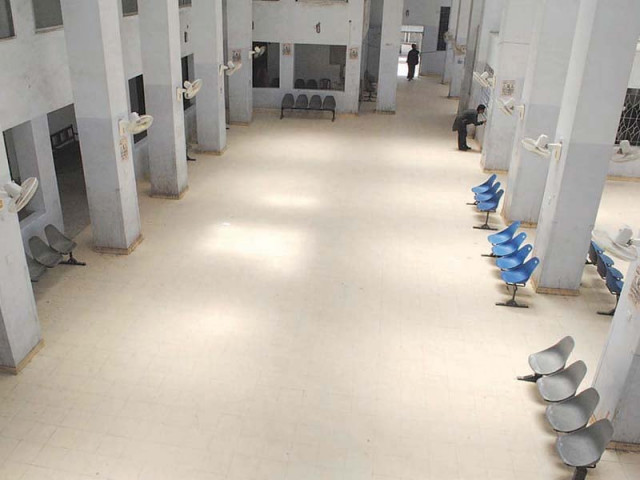Clinics top choice in Covid-19
NCHD survey finds poor suffered most consequences from virus

Amidst fears that hospitals may be overwhelmed during a second, fierce wave of the novel coronavirus (Covid-19) in the country, a survey report has found that most people sought treatment at private clinics than at government-run centres.
The survey report was prepared by the National Commission for Human Development (NCHD) in collaboration with the International Rescue Committee (IRC) and was released on Tuesday.
Key findings of a coordinated GAP analysis was conducted in 41 districts, covering 16,400 households, distributed in urban and rural areas.
NCHD Director General Hassan Baig, while addressing the launch meeting, said that the report reflects the first lockdown period.
During this time, he said, around 18.9% of people availed health services from government hospitals or basic health units (BHUs).
A whopping 37.6% sought treatment at private clinics - which confirmed fears that private clinics became one of the sources from where the virus spread the most.
Another 24.2% self-medicated, while 2.2% sought treatment at homoeopathy medicine practitioners. Another 15.6% consulted local practitioners.
He added that 20% of people who contracted the pandemic virus did so from infected family members. Moreover, the report found that many people showed symptoms of aggressive behaviour, sadness, depression, substance abuse, anti-social behaviour, sleeplessness and an unwillingness to take care of siblings whilst under lockdown.
While addressing the event, Federal Education Secretary Farah Khan said the world is undergoing a new normal and it seems to be adapting to it.
She added that before the pandemic, Pakistan’s human development index rankings were quite low. With the pandemic brutally exposing some of these leggings, she urged there was a need to impose an emergency on all human development sectors.
She said that the Coordinated Gap Analysis key findings report developed by NCHD and IRC will be useful for policymakers and organisations engaged in development initiatives in the country. Farah encouraged the NCHD to make the report accessible and advised to contribute in other sectors as it has an outreach in several districts.
The education ministry, Farah said, has taken several initiatives to provide quality education to children and is working on collecting data while researching for policy analysis to enhance the role of provinces in uplifting the education sector in the country.
NCHD Chairman Col (Retd) Dr Amirullah Marwat said that the precautionary measures prescribed by the government against the spread of Covid-19, are not being adopted by the public and it has caused an increase in the number of virus cases in the country.
It is important, he stressed, that people are aware of the importance of social distancing and wearing face masks to protect each other from the virus.
“The study can help us a lot in devising new techniques and strategies for better and faster learning as a lot of time has already been wasted due to this pandemic,” he commented.
The NCHD chief noted that while the pandemic has been indiscriminate in terms of nationality, level of education, income or gender when infecting people, the same is not true for its consequences where the vulnerable have been hit the hardest.
Talking about the impact on education, the report reveals that different modes were opted by children. Around 6.2% utilised the government’s Tele School initiative, 8.4% went for digital learning, 7.4% used assignment-based tasks while 69.2% self-studied with parents.
The abrupt closure of schools interrupted the learning of 57.5% of pupils and resulted in a dropout rate of 13.4%. The report further highlighted that 89.9% of sources of income for the public were hit under the lockdown.
Published in The Express Tribune, December 16th, 2020.



















COMMENTS
Comments are moderated and generally will be posted if they are on-topic and not abusive.
For more information, please see our Comments FAQ